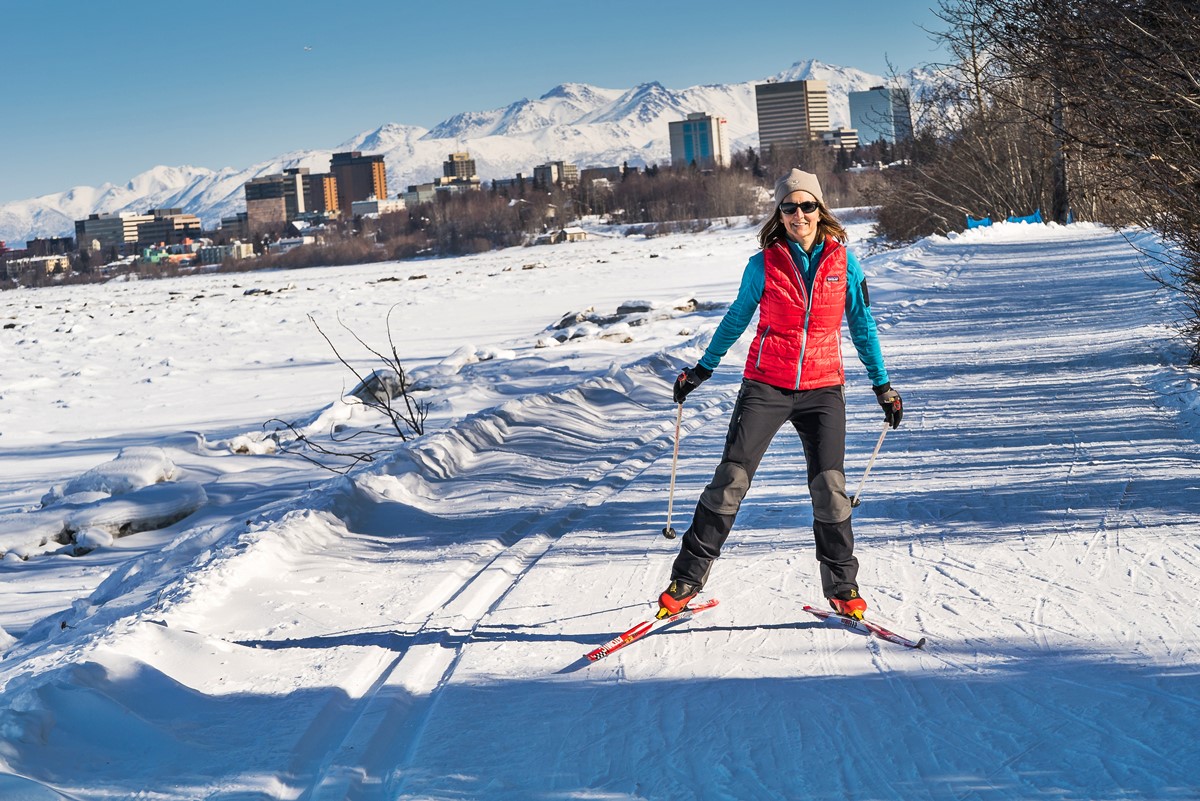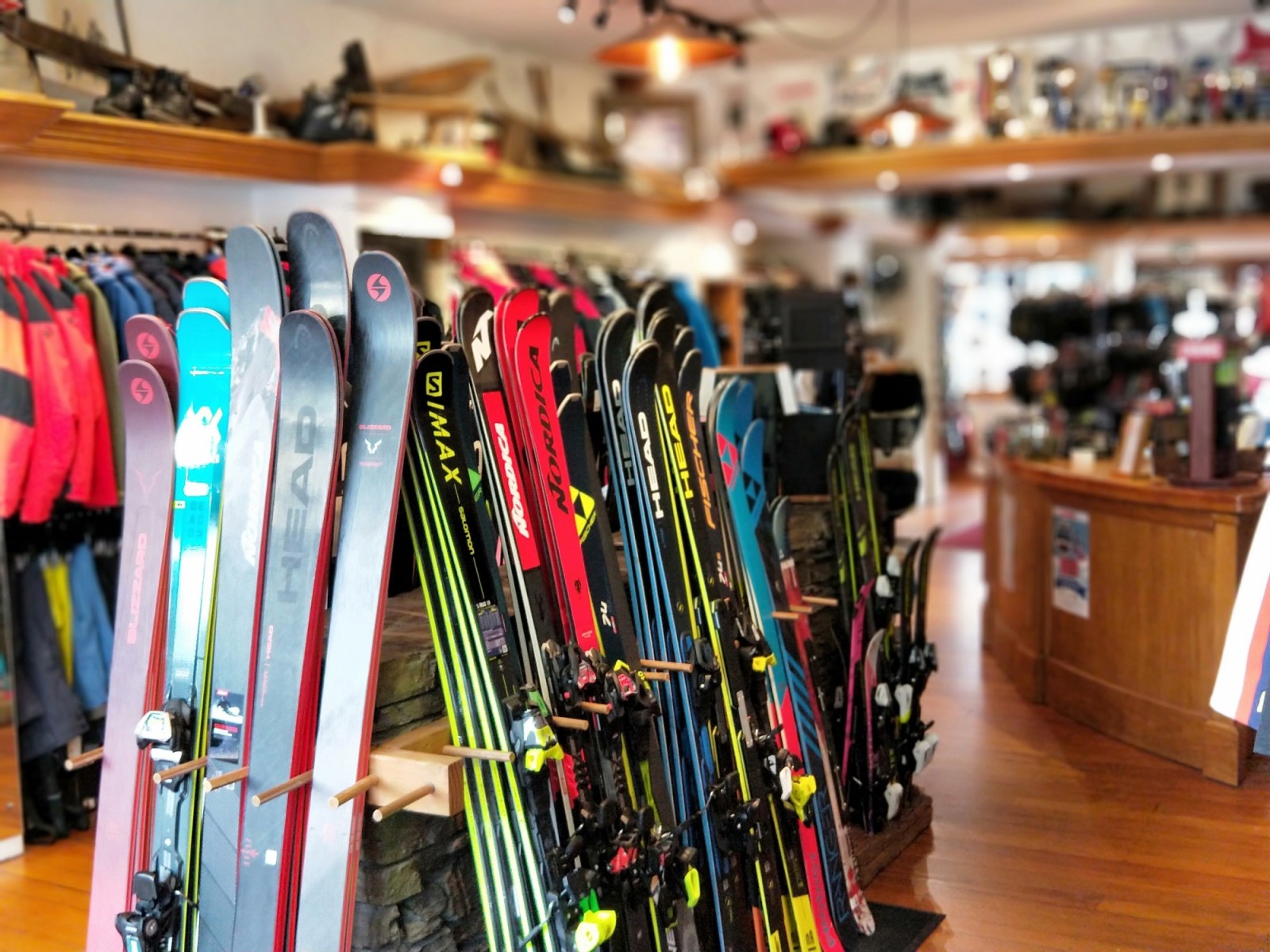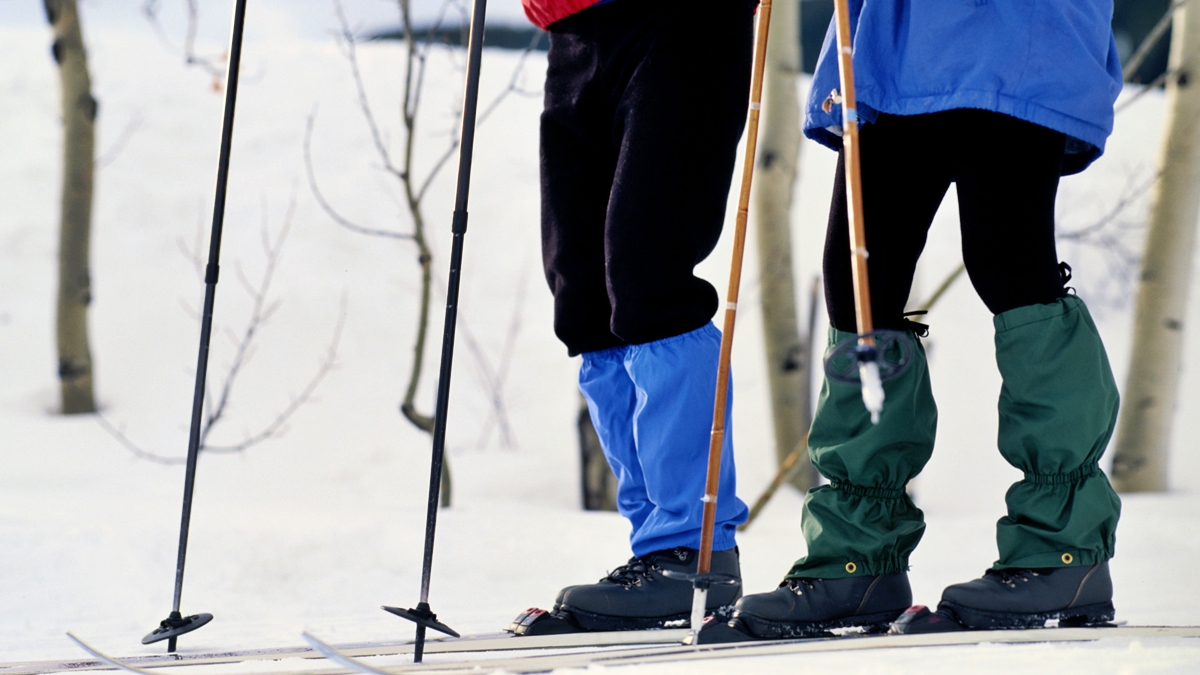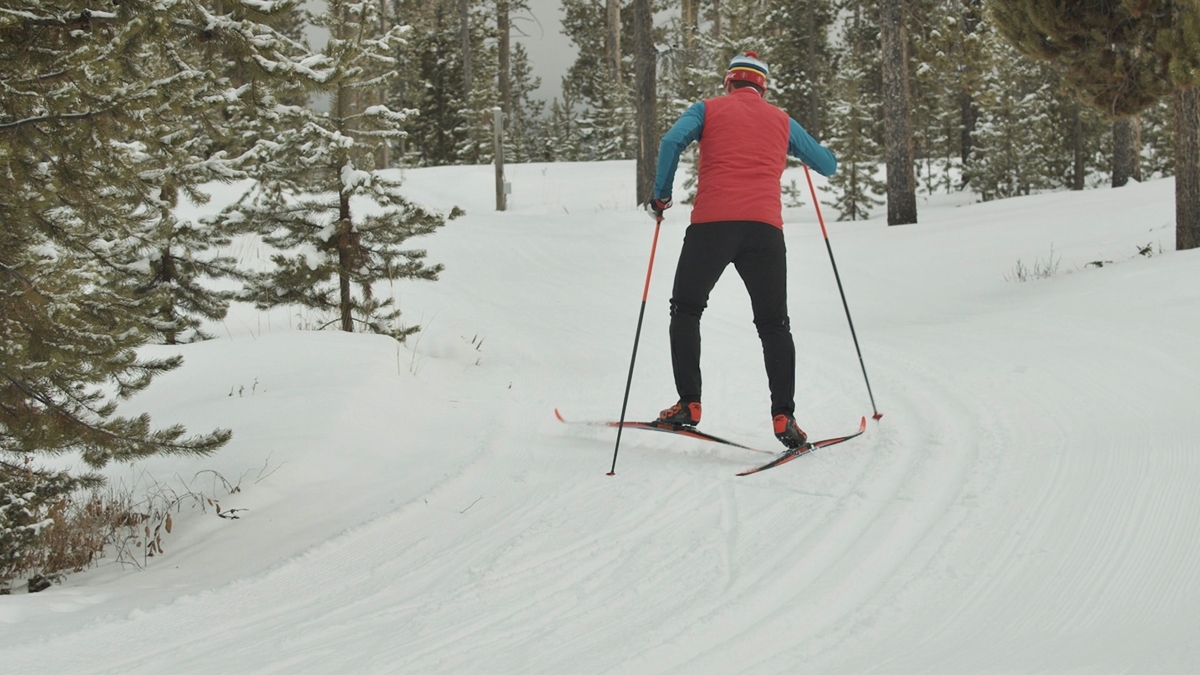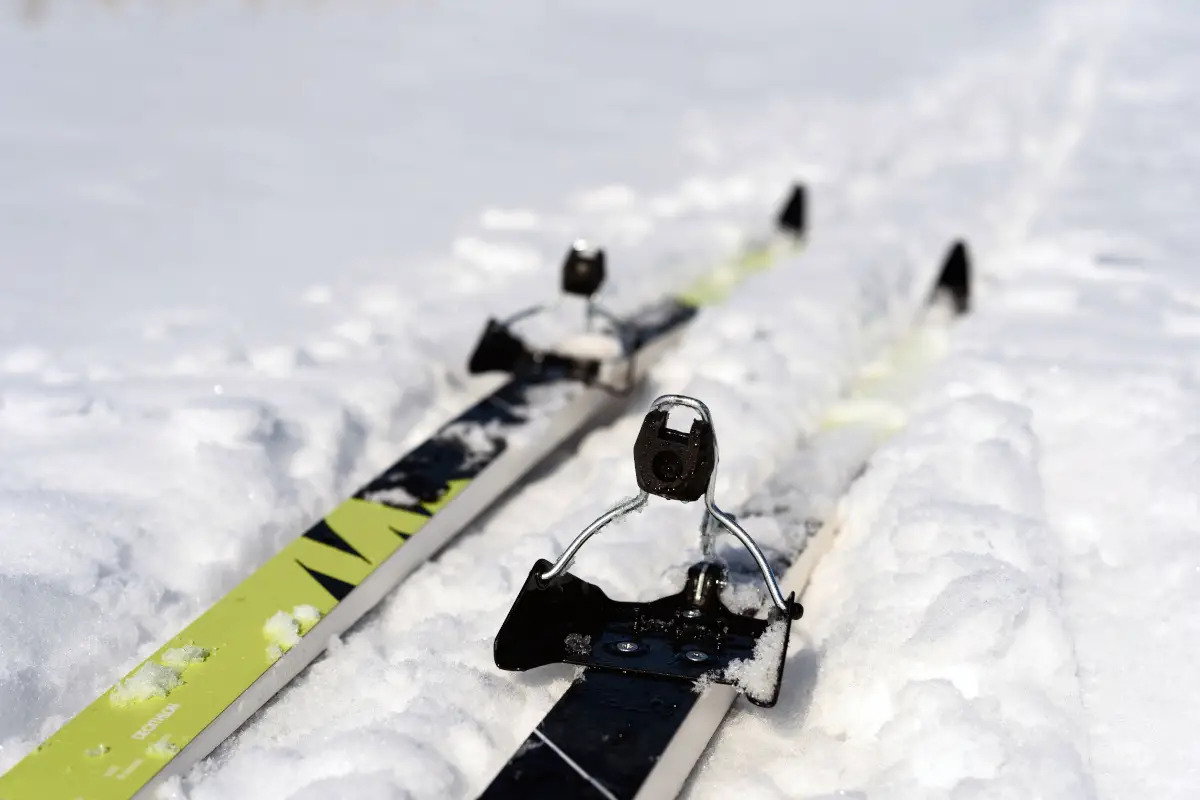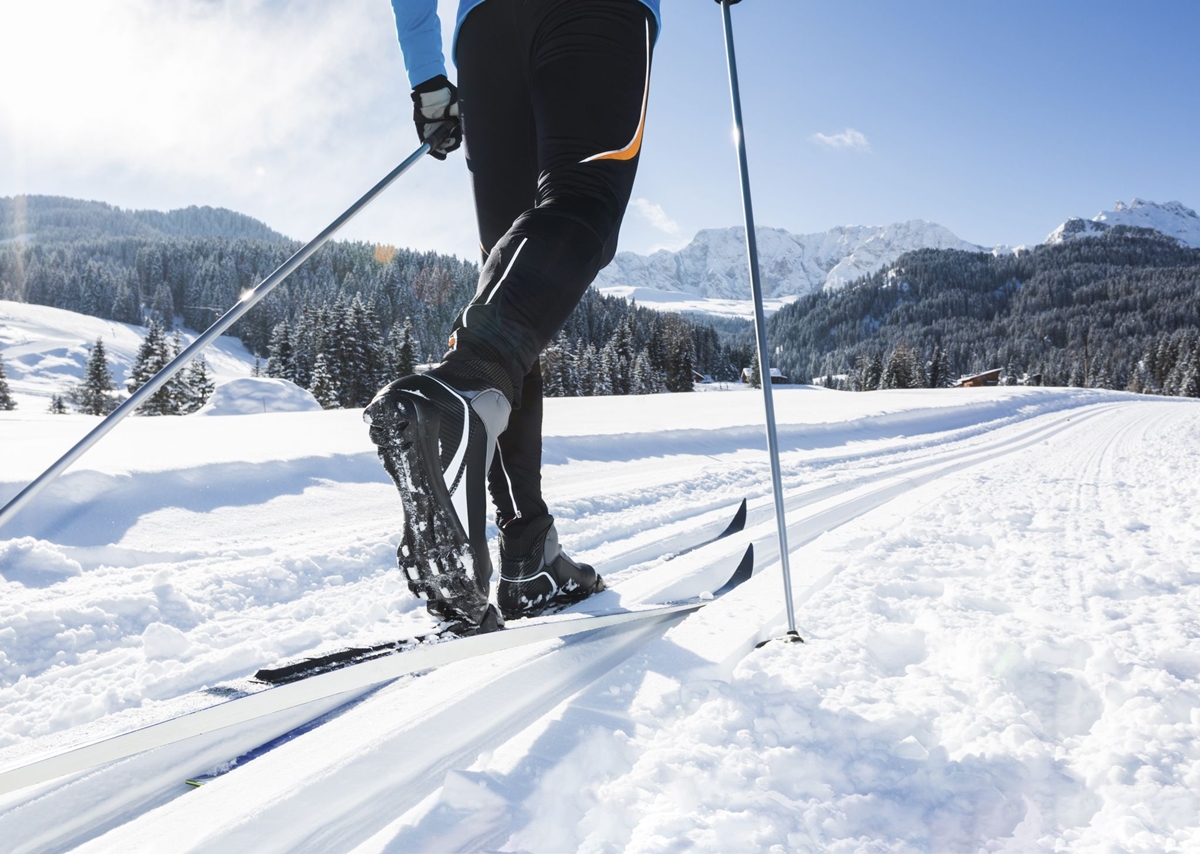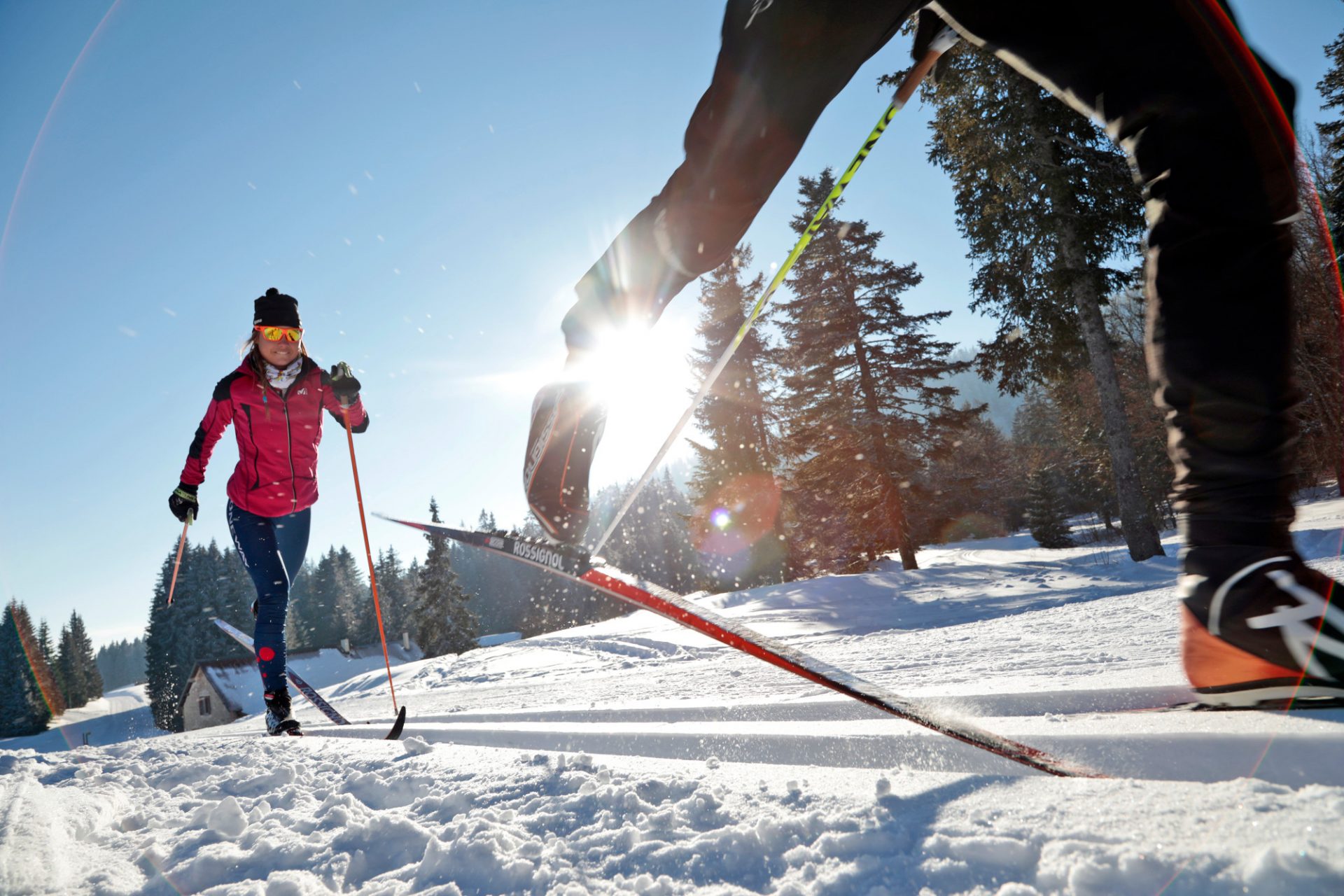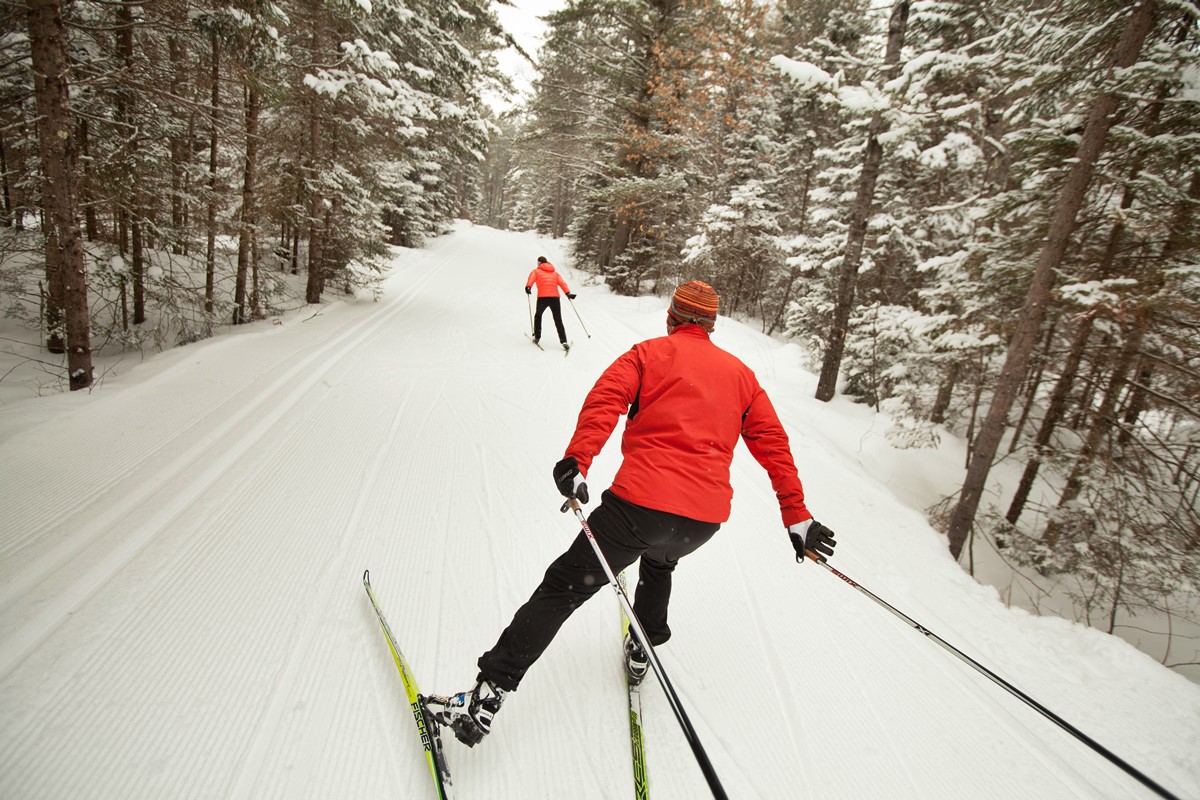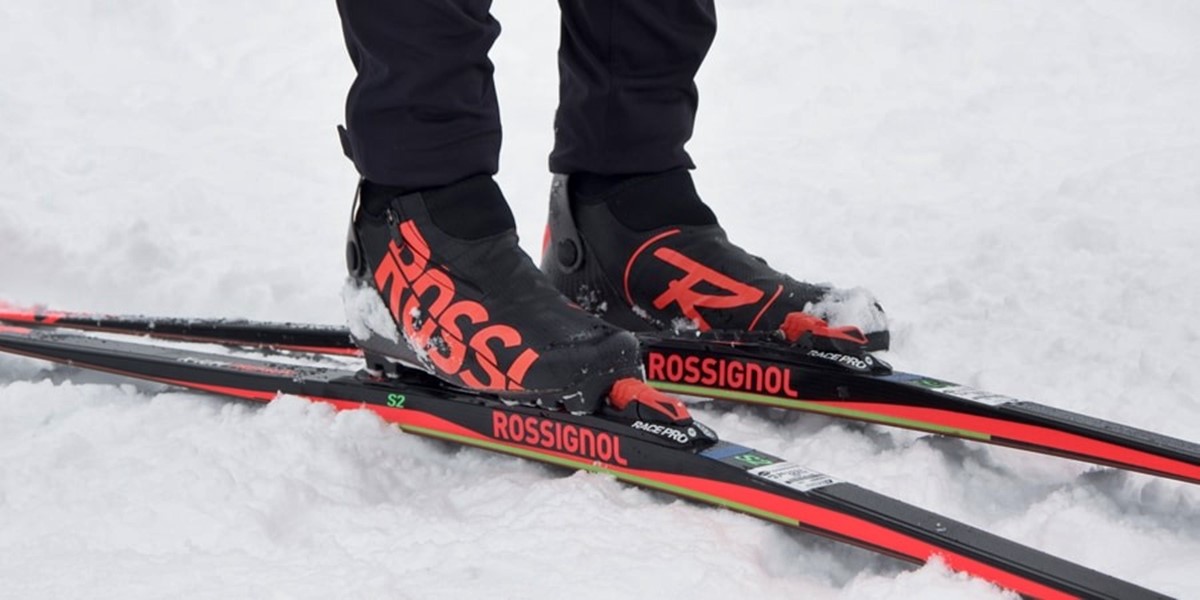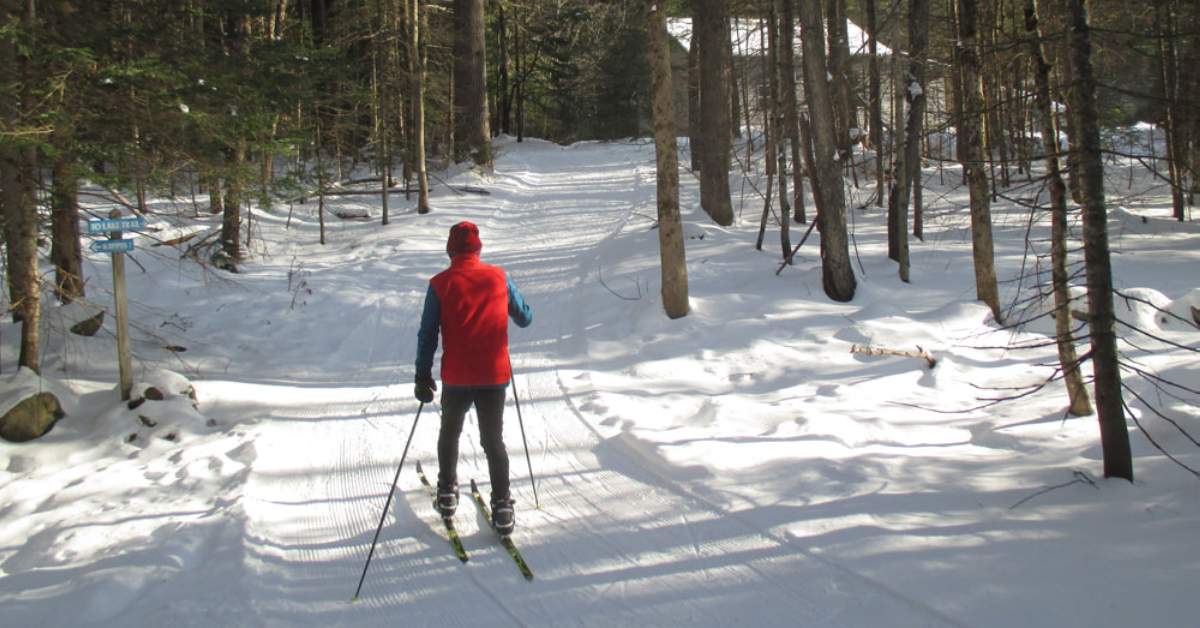

Featured
Where To Go Cross Country Skiing Near Me
Modified: January 22, 2024
Discover the best cross country skiing locations near you! Check out our featured destinations for an exhilarating winter adventure.
Introduction
Welcome to the exciting world of cross country skiing! If you’re looking for a fun and challenging outdoor activity that allows you to immerse yourself in nature and get a great workout at the same time, then cross country skiing is the perfect choice for you. Whether you’re a beginner or an experienced skier, there are plenty of opportunities for cross country skiing near you.
Cross country skiing, also known as Nordic skiing, is a popular winter sport that involves gliding over snow-covered terrain using specialized skis and poles. Unlike downhill skiing, which focuses on speed and adrenaline, cross country skiing offers a more relaxed and peaceful experience. It’s a fantastic way to explore the winter landscape, enjoy the fresh air, and engage in a full-body workout.
One of the great things about cross country skiing is that it can be enjoyed by people of all ages and fitness levels. Whether you’re looking for a leisurely stroll through the woods or an intense cardio workout, cross country skiing provides a versatile and accessible option. Plus, it’s a great alternative to other winter activities like snowboarding or ice skating.
In this article, we’ll explore the factors to consider when choosing a cross country skiing location, popular skiing spots across the country, local trails in your state or region, as well as clubs and organizations to join for a community of like-minded skiers. We’ll also provide some helpful tips for beginners to get started and ensure a safe and enjoyable experience on the snow. So, let’s hit the trails and discover the wonderful world of cross country skiing!
Factors to Consider for Cross Country Skiing
Before you embark on your cross country skiing adventure, there are a few important factors to consider. These considerations will help you choose the right location, ensure your safety, and enhance your overall experience. Let’s take a look at some key factors to keep in mind:
- Snow Conditions: The quality and quantity of snow are crucial for a successful cross country skiing outing. Look for locations that have reliable snowfall and well-maintained trails. Check weather forecasts and trail reports to ensure optimal snow conditions.
- Trail Difficulty: Cross country skiing trails come in various difficulty levels, ranging from beginner-friendly to more challenging terrains. Consider your skill level and physical fitness when choosing a trail. Beginners may prefer flatter and groomed trails, while seasoned skiers may seek more hilly and adventurous routes.
- Trail Network: Some locations offer extensive trail networks that allow skiers to explore different routes and enjoy longer outings. Look for areas with interconnected trails, as this will provide more options and opportunities to vary your skiing experience.
- Amenities: Consider the amenities available at the skiing location. Are there restroom facilities, warming huts, or equipment rental shops? These amenities can enhance your comfort and convenience during your skiing trip.
- Accessibility: Choose a location that is easily accessible for you. Consider the proximity to your home, available parking, and any additional transportation requirements. Being able to reach the skiing location without much hassle will make your experience more enjoyable.
- Local Rules and Regulations: It’s important to familiarize yourself with any rules and regulations in place at your chosen skiing location. Some trails may require permits or have specific guidelines for trail usage. Respect these rules to ensure the preservation of the environment and the safety of all skiers.
- Scenic Beauty: Crossing through picturesque landscapes can greatly enhance your skiing experience. Look for locations that offer stunning views of mountains, forests, or frozen lakes. The beauty of the surroundings will make your skiing adventure even more memorable.
- Weather Conditions: While cross country skiing can be enjoyed in a variety of weather conditions, it’s important to be prepared for the elements. Check the weather forecast before heading out and dress appropriately in layers to stay warm and comfortable.
By considering these factors, you can select the perfect cross country skiing location that suits your preferences, skill level, and desired experience. Whether you’re seeking tranquility, adventure, or a combination of both, the right factors will guide you to an unforgettable skiing journey!
Popular Cross Country Skiing Locations
When it comes to cross country skiing, there are countless locations across the country that offer exceptional trails and breathtaking scenery. Whether you’re looking for a local spot or willing to travel, here are some popular cross country skiing destinations to consider:
- Aspen, Colorado: Aspen is not just known for its world-class downhill skiing, but it also offers fantastic cross country skiing opportunities. The Aspen Snowmass Nordic Trail System boasts over 60 miles of groomed trails, suitable for all skill levels.
- Boundary Waters Canoe Area, Minnesota: Located in the heart of Minnesota, the Boundary Waters Canoe Area is a haven for outdoor enthusiasts. During winter, the vast wilderness becomes a cross country skiing paradise with winding trails that take you through icy lakes and dense forests.
- Yellowstone National Park, Wyoming: Known for its geysers, wildlife, and stunning landscapes, Yellowstone National Park transforms into a winter wonderland for cross country skiers. The park offers miles of scenic trails, where you can spot bison, elk, and other wildlife as you glide through the snow.
- Grafton Lakes State Park, New York: Just a short drive from Albany, Grafton Lakes State Park is a hidden gem for cross country skiing in the Northeast. With over 25 miles of groomed trails that wind through rolling hills and frozen lakes, this park offers a peaceful and picturesque skiing experience.
- Jackson Hole, Wyoming: Jackson Hole is renowned for its ski resorts, but it’s also home to excellent cross country skiing options. The Teton Valley Trails and Pathways offer over 17 miles of well-maintained trails, allowing you to enjoy stunning views of the Tetons and surrounding landscapes.
- Methow Valley, Washington: Methow Valley in Washington state is a cross country skiing paradise. With over 120 miles of meticulously groomed trails, skiers can explore charming towns, pass by frozen rivers, and enjoy the serenity of this picturesque valley.
- Trapp Family Lodge, Vermont: The Trapp Family Lodge in Stowe, Vermont, is not only a historic destination but also a cross country skiing mecca. With a network of over 37 miles of trails, skiers can follow in the footsteps of the famous von Trapp family and admire the stunning Vermont scenery.
- Canmore Nordic Centre Provincial Park, Alberta: For those willing to venture north of the border, the Canmore Nordic Centre in Alberta, Canada, offers top-notch cross country skiing trails. Built for the 1988 Winter Olympics, this park features over 45 miles of trails set against a backdrop of the beautiful Canadian Rockies.
These are just a few examples of the many cross country skiing destinations available across the country. Whether you prefer the mountains, national parks, or charming rural areas, you’re sure to find a location that suits your preferences and provides an unforgettable skiing experience.
Cross Country Skiing Trails in [Your State/Region]
When it comes to cross country skiing, [Your State/Region] is a treasure trove of diverse landscapes and excellent trails. Whether you’re a local resident or planning a visit, here are some top cross country skiing trails to explore:
- [Trail Name]: Located in [Location], [Trail Name] offers [distance] of stunning cross country skiing trails. The trails wind through [description of the surroundings], providing skiers with breathtaking views and a serene experience.
- [Trail Name]: Situated in [Location], [Trail Name] is a popular choice for cross country skiers of all levels. With its [description of trail difficulty], this trail offers options for beginners as well as experienced skiers seeking a challenge.
- [Trail Name]: Nestled in [Location], [Trail Name] is a hidden gem for cross country skiing enthusiasts. The [description of the trail characteristics], combined with the scenic beauty of [description of the surroundings], makes it a must-visit destination for skiers.
- [Trail Name]: Located in [Location], [Trail Name] is a well-known cross country skiing spot that offers [distance] of groomed trails. Skiers can enjoy [description of the terrain] as they traverse the picturesque landscape of [description of the surroundings].
- [Trail Name]: Situated in [Location], [Trail Name] is a cross country skiing paradise renowned for its [description of the trail features]. Skiers can explore [description of the trail length], including sections that pass through [important landmarks or natural attractions].
- [Trail Name]: Located in [Location], [Trail Name] provides cross country skiers with [description of the trail amenities and features]. Skiers can enjoy [description of the surrounding scenery] as they glide along the well-groomed trails.
- [Trail Name]: Situated in [Location], [Trail Name] is a favorite destination for winter sports enthusiasts. With its [description of the trail difficulty and length], this trail offers a challenging and rewarding experience for cross country skiers.
- [Trail Name]: Nestled in [Location], [Trail Name] boasts [description of the trail features]. Skiers can revel in the beauty of [description of the surroundings] and enjoy the peacefulness of this cross country skiing trail.
These are just a few examples of the many cross country skiing trails available in [Your State/Region]. Each trail offers its own unique characteristics and showcases the natural beauty of the area. Whether you’re a beginner or an advanced skier, there’s a trail for everyone to enjoy in [Your State/Region]. So grab your skis and embark on an unforgettable cross country skiing adventure!
Cross Country Skiing Clubs and Organizations
If you’re passionate about cross country skiing and want to connect with like-minded individuals, joining a club or organization dedicated to the sport can be a fantastic way to enhance your skiing experience. Here are some prominent cross country skiing clubs and organizations that you can consider:
- [Club/Organization Name]: This well-established cross country skiing club offers a range of activities for skiers of all levels. With regular group outings, training sessions, and social events, members can enjoy the camaraderie of fellow skiers while improving their skills.
- [Club/Organization Name]: Known for its commitment to promoting cross country skiing as a recreational and competitive sport, this organization hosts races, clinics, and workshops throughout the year. They also maintain groomed trails and provide coaching for aspiring skiers.
- [Club/Organization Name]: This family-friendly club welcomes skiers of all ages and skill levels. Their programs include youth development, adult training sessions, and social events geared towards fostering a love for cross country skiing in the community.
- [Club/Organization Name]: With a focus on environmental stewardship and trail maintenance, this organization ensures that cross country skiing remains sustainable and accessible to all. They organize group expeditions, educational workshops, and volunteer opportunities for members.
- [Club/Organization Name]: This non-profit organization is dedicated to promoting cross country skiing as a lifelong sport. They offer learn-to-ski programs, fitness clinics, and special events for members, encouraging individuals of all ages to enjoy the benefits of cross country skiing.
- [Club/Organization Name]: This club caters specifically to cross country skiers with a competitive edge. They provide training programs, coaching, and support for skiers who aspire to participate in regional and national-level racing events.
- [Club/Organization Name]: This inclusive organization aims to make cross country skiing accessible to individuals with disabilities. They offer adaptive skiing programs, equipment rentals, and training opportunities, promoting inclusivity and empowerment in the sport.
- [Club/Organization Name]: This club focuses on exploring and appreciating the natural beauty of cross country skiing. They plan multi-day ski trips, backcountry expeditions, and nature tours, allowing members to discover new trails and connect with nature.
By becoming a member of a cross country skiing club or organization, you can gain access to various benefits such as group outings, training resources, social events, and a supportive community. These clubs and organizations are not only a great way to meet fellow skiers but also provide opportunities for skill development, volunteering, and contributing to the growth of the sport. Consider joining one near you to expand your cross country skiing horizons and make lasting connections with fellow enthusiasts.
Tips for Beginners in Cross Country Skiing
If you’re new to cross country skiing, getting started can seem a bit intimidating. However, with the right mindset and a few helpful tips, you’ll be gliding on the snow in no time. Here are some valuable tips for beginners in cross country skiing:
- Take a Lesson: Consider taking a lesson from a certified instructor to learn the proper technique and basic skills of cross country skiing. They can teach you how to balance, use the poles effectively, and navigate different types of terrain.
- Start with Flat and Groomed Trails: Begin your cross country skiing journey on flat and groomed trails. These trails provide a smoother surface and are easier to navigate, allowing you to focus on getting comfortable with the skis and finding your rhythm.
- Get the Right Gear: Invest in quality cross country skiing gear, including skis, boots, and poles that are suitable for your skill level and body type. Ensure that your boots fit properly and provide sufficient ankle support for stability.
- Master the Basic Techniques: Learn the basic techniques of cross country skiing, such as the diagonal stride and double poling. Practice these techniques on flat sections of the trail before progressing to more challenging terrain.
- Build Endurance Slowly: Cross country skiing is a full-body workout that requires stamina and endurance. Start with shorter sessions and gradually increase your skiing time and distance as your fitness level improves.
- Dress in Layers: Dress in layers to regulate your body temperature. Start with a moisture-wicking base layer, add a warm mid-layer, and finish with a waterproof and wind-resistant outer layer. Don’t forget to wear a hat, gloves, and insulated socks.
- Learn Proper Falling Techniques: Falling is a part of learning any new sport. Learn how to fall safely to avoid injuries, such as using your poles to cushion the impact or falling to the side instead of backwards.
- Practice Downhill Techniques: In addition to flat terrain, practice downhill techniques to improve your control and balance. Learn how to snowplow and side-step downhill to maintain your speed and stability.
- Stay Hydrated and Fuel your Body: Stay hydrated throughout your skiing sessions by drinking water regularly. Pack a small snack or energy bar to keep your energy levels up during longer outings.
- Enjoy the Journey: Cross country skiing is not just about reaching the destination; it’s about enjoying the journey and immersing yourself in the beauty of nature. Take breaks to appreciate the surroundings and have fun on the snow.
Remember, cross country skiing is a learning process, and it’s normal to make mistakes and face challenges along the way. Embrace the learning experience, be patient with yourself, and continue to practice. With time and dedication, you’ll develop your skills and gain confidence on the skis. So, grab your gear, keep these tips in mind, and enjoy the exhilarating world of cross country skiing!
Safety Measures and Precautions in Cross Country Skiing
Cross country skiing is a fun and exhilarating activity, but like any outdoor sport, it’s important to prioritize safety. By following a few key safety measures and precautions, you can ensure a safe and enjoyable experience on the trails. Here are some essential tips to keep in mind:
- Be Prepared: Before heading out, check the weather conditions and trail reports. Dress appropriately in layers to protect yourself from the cold and wind. Carry essentials like a map, compass, whistle, headlamp, and a first aid kit.
- Warm Up: Start with a warm-up routine to prepare your muscles and joints for physical activity. Perform dynamic stretches and gentle exercises to increase circulation and improve flexibility.
- Use Proper Technique: Learning and using proper skiing techniques can significantly reduce the risk of injury. Take lessons from a certified instructor to develop good form and technique from the beginning.
- Stay on Designated Trails: Stick to marked trails and avoid venturing into unknown or off-limits areas. Straying from designated trails can increase the risk of getting lost or encountering hazardous conditions.
- Be Aware of Your Surroundings: Pay attention to your surroundings and be aware of other skiers, snowshoers, or wildlife on the trails. Yield to others when necessary and communicate your intentions with clear signals.
- Monitor Your Energy Levels: Cross country skiing can be physically demanding. Monitor your energy levels, take breaks when needed, and avoid overexertion. Stay hydrated and nourished with snacks to maintain your energy throughout your skiing session.
- Carry Safety Equipment: Carry safety equipment such as a whistle, cell phone, and basic first aid supplies. In case of an emergency, these items can help you call for assistance or provide aid until help arrives.
- Use Sun Protection: Even on cloudy days, UV rays can still harm your skin. Apply a broad-spectrum sunscreen and wear sunglasses or goggles to protect your eyes from snow glare.
- Check Equipment: Regularly inspect your skis, boots, bindings, and poles for any signs of damage or wear. Make sure your equipment is in good condition and properly adjusted before each outing.
- Practice Avalanche Safety: If you plan to ski in areas prone to avalanches, it’s vital to be educated on avalanche safety. Learn about assessing the avalanche risk, carrying proper safety equipment, and skiing with a partner.
By following these safety measures and precautions, you can mitigate risks and ensure a safe and enjoyable cross country skiing experience. Remember, it’s important to be well-prepared, make smart decisions, and prioritize your safety and the safety of others. So strap on your skis, stay vigilant, and enjoy the breathtaking beauty of cross country skiing with peace of mind!
Equipment and Gear for Cross Country Skiing
Having the right equipment and gear is essential for a comfortable and enjoyable cross country skiing experience. Whether you’re a beginner or an experienced skier, here is a list of essential equipment and gear you’ll need:
- Cross Country Skis: Choose skis that are appropriate for your skill level and intended terrain. Classic skis are ideal for groomed trails, while skate skis are designed for a more dynamic and faster style of skiing on firm snow.
- Cross Country Ski Boots: Invest in comfortable boots that provide good ankle support and a snug fit. The boots should also be compatible with the bindings on your skis. Make sure to try on different brands and models to find the best fit for your feet.
- Ski Poles: Ski poles help with balance, propulsion, and maneuverability. Choose poles that are the right length for your height and skiing style. For classic skiing, the poles should reach your armpit, while for skate skiing, they should be slightly shorter, reaching your chin or mouth.
- Bindings: Bindings connect your boots to the skis. There are different types of bindings available, so make sure to choose the ones that are compatible with your boots and skis. Some bindings offer more control and stability, while others prioritize lightweight and flexibility.
- Ski Clothing: Dress in layers to regulate your body temperature. Start with a moisture-wicking base layer to keep you dry, add insulating layers for warmth, and finish with a windproof and waterproof outer layer. Don’t forget to wear thermal socks, gloves or mittens, and a hat to keep your extremities warm.
- Ski Wax: Applying ski wax to the base of your skis helps improve glide and control on the snow. There are different types of wax available depending on the snow conditions and temperature. Consult a ski shop or follow waxing guides to determine the best wax for your skis.
- Backpack: A small backpack can be handy for carrying essentials such as water, snacks, a map, a spare layer, and a basic first aid kit. Choose a lightweight and comfortable backpack with adjustable straps and compartments for easy organization.
- Sunglasses or Goggles: Protect your eyes from snow glare and UV rays by wearing sunglasses or goggles. Make sure they offer UV protection and have a secure fit to prevent them from falling off during your skiing adventures.
- Ski Gloves or Mittens: Insulated ski gloves or mittens are essential for keeping your hands warm in cold temperatures. Look for gloves with waterproof exteriors and breathable liners for comfort and dexterity.
- Ski Helmet (Optional): While not mandatory for cross country skiing, wearing a helmet can provide added protection, especially if you plan to ski in areas with trees or potential hazards. Choose a lightweight and properly fitting helmet designed for winter sports.
Investing in quality equipment and gear will not only enhance your performance but also contribute to a safer and more enjoyable cross country skiing experience. Consider your skill level, skiing style, and local conditions when choosing your equipment. If you’re unsure, consult with knowledgeable professionals at a local ski shop or seek advice from experienced skiers. So gear up, hit the trails, and embrace the exhilaration of cross country skiing!
FAQs about Cross Country Skiing
Curious about cross country skiing? Here are some frequently asked questions and their answers to help you gain a better understanding of this popular winter sport:
- Is cross country skiing difficult to learn?
While cross country skiing does require some physical effort and coordination, it is generally considered easier to learn compared to downhill skiing. Taking lessons from a certified instructor can greatly accelerate the learning process and help you develop the proper techniques. - What are the health benefits of cross country skiing?
Cross country skiing is a fantastic full-body workout that engages various muscle groups. It improves cardiovascular fitness, strengthens the core, enhances balance and coordination, and increases endurance. It’s a low-impact activity that is gentle on the joints while providing an effective way to burn calories and stay in shape. - What kind of terrain is best for cross country skiing?
Cross country skiing can be enjoyed on a variety of terrains, including groomed trails, ungroomed snow, packed powder, and even off-trail in backcountry areas. The terrain you choose depends on your skill level and preference. Beginners usually stick to groomed trails with gentle slopes. - How do I know which length of skis to choose?
The length of your skis depends on factors like your weight, ski style, and skill level. Generally, classic skis should be about the height of your wrist when holding your arm above your head, while skate skis are slightly shorter, reaching between your chin and nose. - What should I wear while cross country skiing?
Dressing in layers is key to regulate body temperature. Wear moisture-wicking base layers to keep you dry, insulating layers for warmth, and a windproof and waterproof outer layer. Don’t forget to wear thermal socks, gloves or mittens, and a hat to keep your extremities warm. - Can I cross country ski if I don’t live near snowy mountains?
Absolutely! Cross country skiing can be enjoyed in various locations, including parks, golf courses, and even urban areas with maintained trails. Nordic centers often provide groomed trails for skiing, making it accessible to people who don’t live near snowy mountains. - Is cross country skiing suitable for all ages?
Yes! Cross country skiing is suitable for people of all ages and fitness levels. It offers a low-impact and joint-friendly activity that can be adjusted to individual abilities. It’s a great way for families to enjoy outdoor time together and for older adults to stay active. - Can I cross country ski with my dog?
Yes, many ski trails allow dogs, but it’s essential to check the trail regulations and guidelines beforehand. Make sure your dog is well-behaved, stays on the designated trail, and doesn’t disturb other skiers. It’s also important to clean up after your dog and respect the environment.
These are just a few common questions about cross country skiing, but there may be more specific inquiries based on individual interests and circumstances. If you have any additional questions, consider consulting ski instructors, local ski shops, or online communities dedicated to cross country skiing. Embrace the sport, explore the trails, and enjoy the thrill of cross country skiing!
Conclusion
Cross country skiing is a wonderful winter activity that offers a unique blend of exercise, adventure, and connection with nature. Whether you’re a beginner or an experienced skier, there are endless opportunities to explore beautiful trails and immerse yourself in the tranquility of snowy landscapes. By considering factors such as snow conditions, trail difficulty, and amenities, you can choose the perfect location for your cross country skiing adventures.
Popular cross country skiing destinations across the country, as well as local trails in your state or region, offer a variety of terrains and stunning views to suit all preferences. Joining cross country skiing clubs and organizations allows you to connect with fellow enthusiasts, improve your skills, and participate in events that celebrate this invigorating sport.
For beginners, taking lessons, practicing proper techniques, and following safety measures are vital to ensure a safe and enjoyable experience. Equipping yourself with the right gear, dressing in layers, and being aware of your surroundings will greatly enhance your skiing journey.
As you embark on your cross country skiing adventure, keep in mind the health benefits, the joy of gliding through winter landscapes, and the sense of accomplishment that comes from mastering the sport. Whether you’re skiing on groomed trails, exploring backcountry routes, or enjoying the companionship of your canine companion, cross country skiing provides a unique and unforgettable experience for individuals of all ages and fitness levels.
So, don your skis, breathe in the crisp winter air, and let the trails lead you to new adventures. Enjoy the beauty of cross country skiing and the thrill of exploring the snowy wonderland that awaits you!
